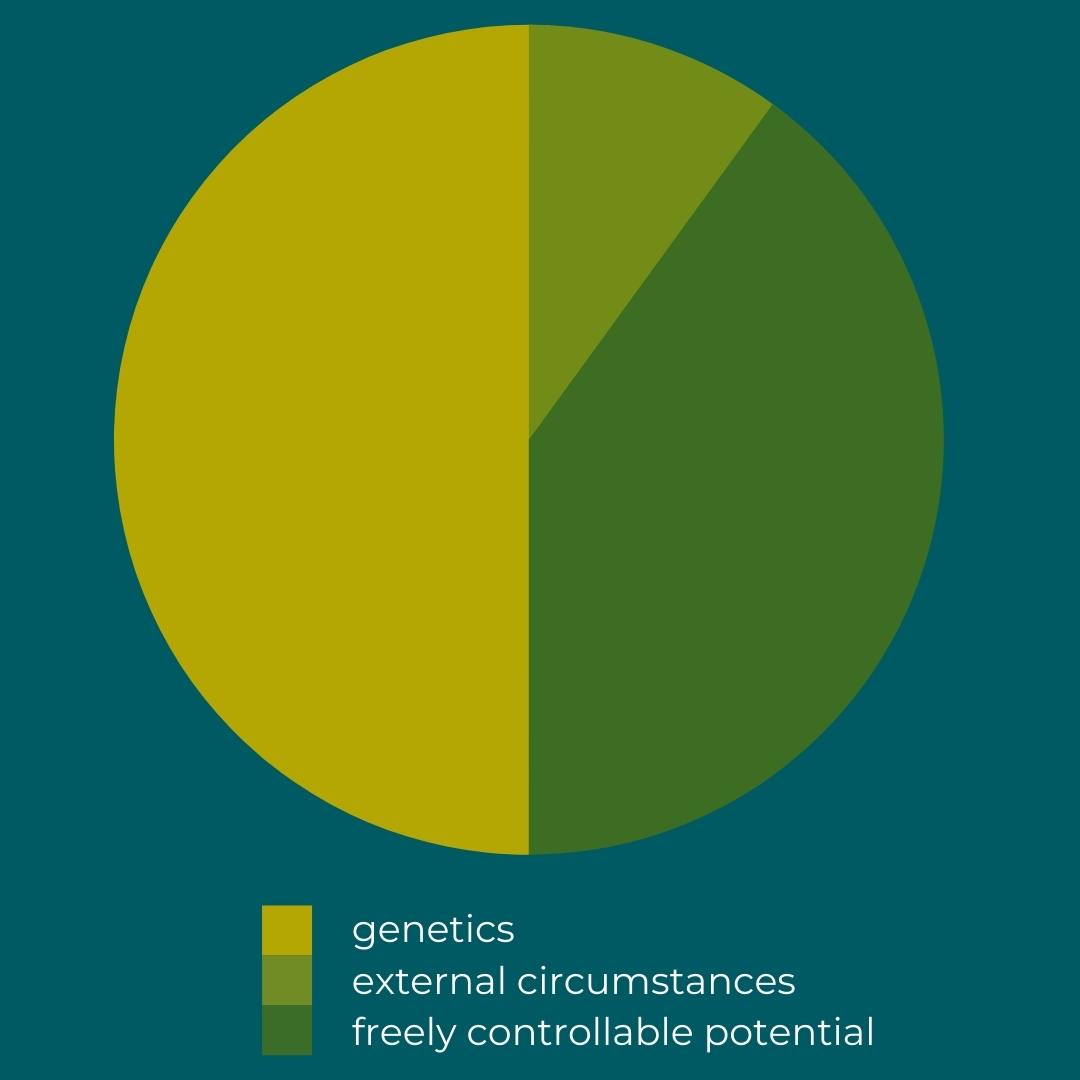
„Happiness is an attitude toward the journey of life, not what you find at your destination.
That’s what happiness researcher and best-selling author Shawn Achor writes.
But what is happiness? And most importantly, how can we be happy and so, as researchers have proven, be 31% more productive than people who go through life with a negative or neutral mindset?
Happiness = a quality-of-life-increase
Happiness research, also known as positive psychology, has been dealing with the topic of happiness for years. Positive psychologists ask themselves how people, who are content and inwardly balanced, deal with difficult situations. What tools do such people have, and how do they manage to see a glass half-empty as a glass half-full? The answer, that ‘making’ happiness requires more than mere affirmations. You can’t achieve a positive attitude by chanting down “I-think-I’m-happy” mantras. Save yourself the trouble, happiness needs more.

The Pie Chart of Happiness
A study from the US found that about 50% of life satisfaction is due to genetics and 10% to external circumstances. Now, in the remaining 40% is the potential to manage our quality of life actively.
WHAT’S THE POINT OF HAPPINESS AT ALL?
Happiness is associated with lower heart rates and blood pressure. Happy people get sick less often, are better protected from stress because they release less cortisol. They are less prone to pain, dizziness, muscle tension, and heartburn, and overall, live longer. What’s more, happiness makes you successful. After all, with a positive attitude – as mentioned above – we are a whopping 31% more productive. Yet it doesn’t have to be “natural” happiness. We know that “experimental reinforcement” of positive emotions also equates to better results at work. People who are happy with their jobs are less likely to quit or take sick leave. In this regard, happiness and job performance are closely linked: happy people do better work, and people who do good work are more likely to be happy.
GOOD NEWS
The science is clear. We can increase our happiness levels by taking specific actions.
HOW DO YOU INCREASE HAPPINESS?
A list of my personal favourites for boosting happiness levels

Connect with people.
A Harvard University study conducted for over 80 years explains that interpersonal relationships are fundamental to happiness. This makes it all the more important to nurture your interpersonal relationships. Surround yourself with people who make you feel supported and loved. Nothing is more effective at increasing happiness.
Do good to others.
People who do good for others significantly increased their sense of happiness. So-called “random acts of kindness” – such as helping an old woman cross the street, giving someone a gift, etc. – lead to an increased release of oxytocin and dopamine, which boosts life satisfaction.


Use your strengths.
Find out what your strengths are – for example, using the CliftonStrengths Finder, and try to use them every day.
Gratitude Exercises.
Create a gratitude jar that you fill with notes and mementos of beautiful moments. Empty it at the end of a year and stick the contents in a book.


Practice mental hygiene.
Think for a moment about what helps you feel good. For me, it’s a piece of chocolate, nice music, or an episode of Pumuckl. Use these things to avoid descending into the deep valley of unhappiness and separate yourself from over-work.
Vision board.
At the end of each year, I create vision boards about how I want to feel in the new year. This strengthens inner alignment and provides moments of happiness.


Allow feelings.
Don’t push your feelings away – even if it can be hard to live through them now – you will feel better in the long run. So, allow them.
We are not born happy. We cannot buy happiness. But we have happiness in our hands, and we can shape it to lead us through life successfully. Work on it.
Good luck.




